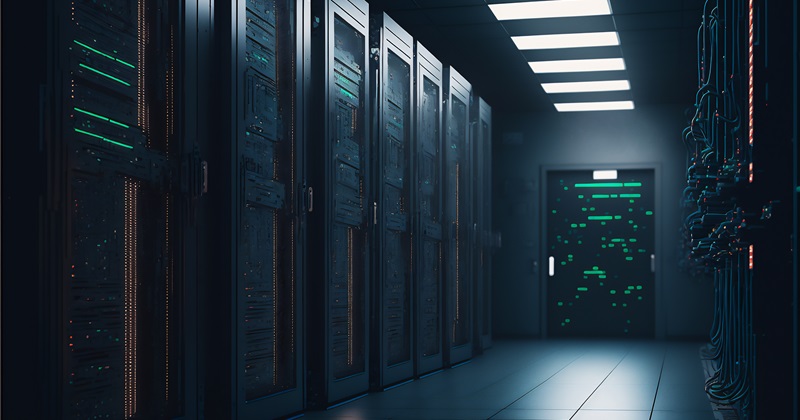The global data center industry is on a concerning emissions trajectory, with expectations to emit an alarming 2.5 billion metric tons of carbon dioxide-equivalent (CO2e) emissions by 2030. This projection underscores the controversial environmental impact of the booming data center sector and the burgeoning demands for artificial intelligence (AI) and cloud computing services from major tech giants like Google, Microsoft, Meta, and Amazon.
Emission Projections Compared to National Levels
The projected CO2e emissions from data centers will amount to nearly 40% of the annual emissions of the United States. This comparison emphasizes the vast scale of the issue, making it evident that the data center industry’s carbon footprint is poised to become a critical part of global emissions if current trends continue unchecked. Given the substantial expansion of data centers anticipated to meet the growing demands for AI and cloud computing services, these figures paint a daunting picture.
Generative AI is projected to drive a 70% annual increase in energy demand through 2027. The urgency for scalable renewable energy solutions grows ever more apparent. The surge in energy needs from computationally intensive AI workloads necessitates vast data center expansions, further exacerbating the carbon emissions dilemma. This challenge necessitates a holistic approach involving not only technological advancements but also regulatory frameworks to manage emissions sustainably while meeting escalating demands.
Technological and Investment Solutions
Despite the worrisome emission statistics, the trajectory of data center growth brings forth significant opportunities for investments in clean energy solutions and energy-efficient technologies. There’s a clear potential for the booming data center market to stimulate advancements in decarbonization technologies such as carbon capture, utilization, and sequestration (CCUS), and carbon dioxide removal (CDR). These technologies are at the forefront of efforts to address and manage the carbon footprint of data centers, providing viable pathways to mitigate environmental impacts while supporting industry growth.
Leading tech companies are already taking strides in this direction. Google is working towards achieving 24/7 carbon-free energy for its data centers, investing in renewable energy projects, on-site batteries, and geothermal power. Similarly, Microsoft’s ambitious goal of becoming carbon-negative by 2030 demonstrates an industry-wide push towards sustainable operations. These companies are not just investing in clean energy but also optimizing energy consumption through advanced software and machine learning. Such measures underscore the potential for reducing emissions while maintaining high-performance computing capabilities.
Energy Demand from Generative AI and Cloud Services
A significant driver behind the surging energy demands is the rise of generative AI, which directly impacts the need for extensive data center expansions. According to previous Morgan Stanley research, generative AI is projected to drive a substantial 70% annual increase in energy demand through 2027. This is primarily due to the computational intensity required to support AI workloads. The expansive computational requirements necessitate advanced hardware and cloud infrastructure, further adding to energy consumption rates.
This surge in demand for high-performance computing resources necessitates continuous development and scaling of data center infrastructure. However, this expansion comes with a hefty environmental cost unless mitigated with robust sustainable practices and innovations in energy-efficient technologies. The challenge lies in balancing the rapid growth needed to support AI advancements with sustainable methods of energy consumption and emissions reduction.
Balancing Growth with Sustainability
The tech industry’s response to the emission crisis is multifaceted. Aside from clean energy investments, companies like Microsoft are leveraging AI and Internet of Things (IoT) technologies to optimize data center operations. These technological advancements play a crucial role in enhancing energy efficiency and reducing carbon emissions. Amazon, for instance, aims to operate its data centers solely on renewable energy by 2025, marking a significant commitment towards sustainability. These initiatives indicate a broad industry push toward integrating sustainable practices within their operational frameworks.
The pursuit of these goals is not without its inherent challenges. Companies face logistical hurdles like constrained power lines, planning delays, and supply chain bottlenecks which limit grid capacity. Addressing these challenges requires concerted efforts from both the private and public sectors to ensure that the growth in data center capacity aligns with broader environmental objectives. Effective coordination and innovative solutions are vital to overcoming these barriers and achieving long-term sustainability goals.
Scrutiny from Municipalities and Regulators
The global data center industry is heading towards a troubling path when it comes to emissions, with projections indicating it could emit a staggering 2.5 billion metric tons of carbon dioxide-equivalent (CO2e) by 2030. This unsettling forecast highlights the significant environmental impact of the ever-expanding data center sector. The increasing demand for artificial intelligence (AI) and cloud computing services from tech giants like Google, Microsoft, Meta, and Amazon is driving this growth. As these companies continue to scale their operations, the emissions from their data centers are expected to soar, raising concerns about the long-term sustainability of this rapid expansion. The reliance on vast networks of servers to process and store data is becoming a pressing environmental issue, prompting calls for greater efficiency and greener technologies. While the tech sector’s innovations bring numerous benefits, the associated environmental costs are prompting a re-examination of how data centers are operated and powered, underscoring the need for more sustainable practices in handling the ever-growing data demand.

